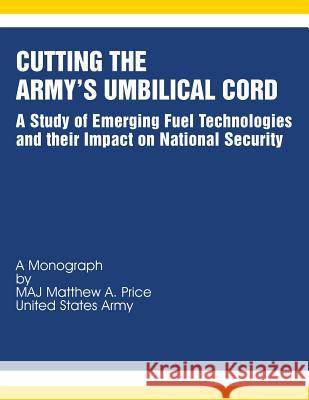Cutting the Army's Umbilical Cord » książka
Cutting the Army's Umbilical Cord
ISBN-13: 9781481880145 / Angielski / Miękka / 2012 / 64 str.
The U.S. dependence on foreign oil is a national security concern. The Department of Defense is the largest federal government consumer of oil and the Army plays a significant role in reducing consumption. To do this, the Army must reduce fuel consumption at U.S. installations but most importantly, at deployed locations. Improving the efficiency and decreasing consumption of sustainment platforms, the largest battlefield consumers of fuel, became an Army priority during Operations Iraqi and Enduring Freedom. This new focus on emerging fuel technologies has the potential to decrease the logistical requirements in theater, reduce the budget outlays for fuel, and reduce risk for soldiers. In order to validate these claims, this monograph analyzes three case studies. The three emerging fuel technologies evaluated are microgrids, solar and wind power generators, and hybrid-electric tactical wheeled vehicles. The method used in the case studies is to replace an inefficient existing technology with the new one and calculate fuel savings, cost savings, risk reduction, and casualty reduction. The data collected from the analysis of these case studies draw some eye opening conclusions. Most significant is the number of tankers removed from the roads in one-year, which approaches 3,000, corresponding to close to 6,000 soldiers no longer needed in theater to deliver fuel. This decrease of soldiers leads to four soldiers who might have avoided death in Iraq in 2007. Because of these findings, this monograph asserts that the Army use an enterprise approach at developing and implementing emerging fuel technologies in order to decrease fuel cost and risk to soldiers.
Zawartość książki może nie spełniać oczekiwań – reklamacje nie obejmują treści, która mogła nie być redakcyjnie ani merytorycznie opracowana.











